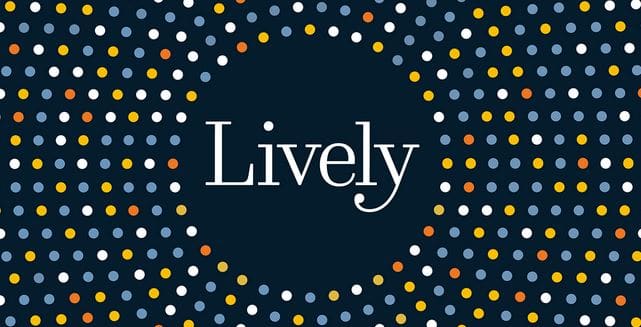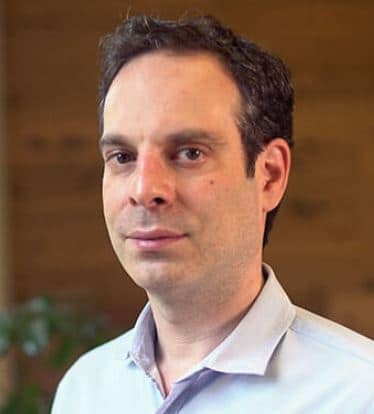A few months ago, start-up company, Listen Lively burst onto the hearing care scene. Offering a pair of modern hearing aids, plus two years of remote video conferencing appointments with a licensed audiologist, Listen Lively could be poised to shake-up the current brick and mortar hearing aid dispensing model. Recently, Listen Lively CEO, Adam Karp was queried by Hearing News Watch Editor-in-Chief, Brian Taylor about the Listen Lively clinical model and its possible impact on the status quo.
BT: Please share with our readers how your company works and what makes it different from other on-line hearing aid retailers?
AK: Lively offers clients a high-end hearing device, the attention and professional care of an audiologist, and world-class customer support– all for an affordable price. This differentiates us significantly from other online retailers that sell Personal Sound Amplification Devices, or that don’t understand how important it is to have an audiologist involved in your hearing care. By combining the convenience of an online experience and the clinical efficacy of personalized audiology, we’re able to offer clients the best of both worlds.
BT: What were the primary motivators for starting Listen Lively?
AK: As the parent of a child who was not treating their hearing loss, I started to educate myself on the condition. I was surprised to learn the prevalence of hearing loss; how untreated it is and the growing concerns of the consequences of untreated hearing loss. Over the course of my journey, I connected with Redesign Health, a venture studio focused on building consumer health businesses that improve access and elevate patient experiences. Improving access in audiology was a perfect fit between my interests and the focus of the studio, so Lively was born.
BT: Who do you identify as the core customers for your business?
AK: Our target is the vast majority of Americans who haven’t treated their hearing and are looking for a more convenient and affordable option than is otherwise available to them.
BT: Please describe the basic customer journey process. That is, what happens from the time a consumer takes the on-line hearing test through the process of purchasing hearing aids?
AK: Although the exact journey can vary from client to client depending on their clinical needs, the Lively flow generally involves taking the online hearing assessment, meeting with an audiologist via videoconference, and then receiving the hearing aid via mail at home. Once received, the hearing aid is fitted via another video conference with the client’s audiologist, who familiarizes the client with the device as well as the mobile app. Additional fittings and tunings are performed as clinically appropriate, and COSI measurement is taken to assess the level of hearing loss rehabilitation.
BT: Please tell us about the on-line hearing test you employ. Who created and validated it? Has it been used by others?
AK: Our test is adapted from an existing on-line hearing test developed by Belgium research engineer and sound designer, Stephane Pigeon. With his permission, we utilized his existing sound files which are based on the ISO-389-7:2005 international standard and adapted them to our test. More importantly, we conducted a series of biological calibration measurements across several conditions including transducer type, device type, operating system, and device starting volume level to determine the appropriate correction factors for each when compared to the gold standard of conventional audiometry.
Our hearing assessment allows us to initially program a client’s hearing aids, but no different than if we used a traditional audiogram to program the hearing aids, our audiologists will continue to fine tune the devices based on a client’s experience with them over time.
BT: Could you tell us about your clinical staff? How are they hired and trained? How do they interact with customers?
AK: The quality of the clinicians working on Lively is fundamental to our success. Lively has recruited a core group of audiologists that have robust clinical experience as well as a forward-looking attitude and awareness of the potential for telemedicine to transform the field of audiology. We perform license checks and additional verification of our clinician’s credentials and work closely with them to look for ways to improve the quality of care that we provide.
BT: Please tell us about the hearing aids dispensed by Listen Lively. Who is the manufacturer? How do your remote clinicians help customers select the appropriate device(s)?
AK: As many in the audiology community have sleuthed out, we’ve partnered with ReSound to develop our hearing aid. The high-end device is suitable for the vast majority of clients that we see. Occasionally, our hearing aid is not a good clinical fit for a client. In those cases, we refer them to an outside audiologist.
BT: How do you address complex problems that warrant a personal visit with a hearing care provider?
AK: It should go without saying that our primary concern is our client’s well-being. When we establish that a patient needs to see a hearing care professional in person, we refer them to a local provider.
BT: What is your outlook for remote delivery of hearing care services over the next 5 or so years? …. Will it be a game changer for traditional bricks and mortar clinics?
AK: I think it’s unlikely that traditional brick and mortar clinics will change in the next 5 years – they serve a specific type of client that is looking for, and can access, in-person care. However, as remote tuning becomes more widely understood and consumers take advantage of the ability to buy high quality and audiologist-supported hearing care through Lively, I believe that we will see many more people getting hearing care than can be serviced by traditional clinics.
BT: What’s the initial reception of consumers and providers been to your presence in the market?
AK: Customer love the convenience of the Lively experience and for first time hearing aid wearers, the devices are life changing:
“The app is amazing! I can adjust the volume and even the sound, on my own. At the same time, I can request changes right from the app and the Listen Lively staff can make the changes for me to upload right to my hearing aids. It’s so easy to use, even for a 60+ newbie like myself, and I don’t have to schedule time to go in for appointments.”
Although there are always people that are skeptical of new technology, we’ve been pleased by the number of forward-thinking audiologists that have reached out because they recognize the importance of telemedicine in transforming access to hearing care in this country. In fact, we’ve had to establish a waiting list for audiologists that are hoping to be able to work with us. In the coming years, we will prove to the community and to the world that the Lively model is the right way forward for the millions of Americans who never seek hearing care.
**Interested readers can visit the Listen Lively website here.








While innovative technologies are being advanced, laws governing the sale of devices in the state of California require that the ownership of companies reside in the state, or at least 50%. This state does require people to be present in person for testing and fitting. This company is blatantly violating these laws in my state and should be prosecuted to the full extent of the law and cease all advertising here as well, I don’t try to sell hearing aids where they live, which I could do, but the law is the law.
I do have a few specific questions which might help fellow hearing care professionals understand the Lively service offering:
– How can you offer “hearing aids professionally prescribed” with only a pure tone (0.5, 1, 2, and 4k) screening?
– How do you compensate for the loss of (cross-check) data points not gathered through bone-conduction and speech audiometry?
– How do you account for not being able to verify the fitting? I understand that basic validation of the fitting is performed.
– If a person uploads an audiogram with a full diagnostic hearing assessment, which extra data-points do you take into consideration when programming the instrument?
What size batteries ae used and can we get rechargeable bayyeries and charger?